There are plenty of options when picking a content management system for a development project. Depending on how advanced you need the CMS to be, what language it’s built in, and who is going to be using it, it can be a nightmare trying to find the “perfect” CMS for a project.
However, some CMSs have a slight edge over the rest of the competition because of the usability of the software. Some are just easier to install, use, and extend, thanks to some thoughtful planning by the lead developers.
We have a number of themes and resources to support these top content management systems. If you’re looking for WordPress themes, Drupal themes, or Joomla themes, we have you covered on Envato Market.
We also support additional popular CMS systems and a variety of WordPress plugins, Drupal plugins, Joomla plugins, and more. Visit our ThemeForest or CodeCanyon marketplaces to browse through a ton of professional options.
Here are the most usable CMSs on the web, so you can choose the one that fits your needs best.
1. WordPress



What is there left to say about WordPress that hasn’t already been said? The PHP blogging platform is far and away the most popular CMS for blogging, and probably the most popular CMS overall. It’s a great platform for beginners, thanks to its excellent documentation and super-quick installation wizard. Five minutes to a running CMS is pretty good. Not to mention the fact that the newest versions auto-update the core and plugins from within the back end, without having to download a single file.
For those users not familiar with HTML or other markup languages, a WYSIWYG editor is provided straight out of the box. The back-end layout is streamlined and intuitive, and a new user should be able to easily find their way around the administration section. WordPress also comes with built-in image and multimedia uploading support.
For developers, the theming language and the Plugin API are fairly simple and straightforward.
The WordPress Community is a faithful and zealous bunch. WordPress probably has the widest base of plugins and themes to choose from. We also have thousands of professional WordPress themes and WordPress plugins available for sale on Envato Market, with a full suite of styles and options to choose from.
A great thing about the WordPress community is the amount of help and documentation online you can find on nearly every aspect of customizing WordPress. If you can dream it, chances are it’s already been done with WordPress and documented somewhere.
If you need help with anything from installing a theme to optimizing the speed of your WordPress site, you can find plenty of experienced WordPress developers to help you on Envato Studio.
2. Drupal



Drupal is another CMS that has a very large, active community. Instead of focusing on blogging as a platform, Drupal is more of a pure CMS. A plain installation comes with a ton of optional modules that can add lots of interesting features like forums, user blogs, OpenID, profiles, and more. It’s easy to create a site with social features with a simple install of Drupal, and it offers some useful third-party modules.
One of Drupal’s most popular features is the Taxonomy module, a feature that allows for multiple levels and types of categories for content types. And you can find plenty of professional Drupal themes, which are ready to be customized and worked with. You can also grab Drupal plugins.
Drupal also has a very active community powering it, and has excellent support for plugins and other general questions.
You can also hire a developer to complete a range of tasks for your Drupal site for a reasonable fixed fee.
3. Joomla!



Joomla is a very advanced CMS in terms of functionality. That said, getting started with Joomla is fairly easy, thanks to its installer. Joomla’s installer is meant to work on common shared hosting packages and is very straightforward considering how configurable the software is.
Joomla is very similar to Drupal in that it’s a complete CMS, and it might be a bit much for a simple portfolio site. It comes with an attractive administration interface, complete with intuitive drop-down menus and other features. The CMS also has great support for access control protocols like LDAP, OpenID, and even Gmail.
The Joomla site hosts more than 3,200 extensions, so you know the developer community behind the popular CMS is alive and kicking. Like WordPress, you can add just about any needed functionality with an extension. However, the Joomla theme and extension community relies more on paid resources, so if you’re looking for customizations, be ready to pull out your wallet. You can also grab Joomla plugins or hire Joomla developers to help you get your store set up right.
4. Shopify



You can use the Shopify eCommerce software to create a great website design and add products with images, titles, and descriptions. You can also set up a full checkout functionality, where customers can pay for your products.
Shopify has a great free store theme that you can use to customize your website images, fonts, and colors to your satisfaction with no design skills required, and the themes are fully responsive. With Shopify, you manage your products, inventory, payments, and shipping, and you can also sell your products on the web, mobile, social media, and marketplaces.
One of the unique features of Shopify is that you can accept credit cards instantly, without third-party accounts.
When dealing with other CMS systems, you’ll have to upgrade your tool to the current version to obtain new features, but Shopify is cloud-based and hosted, so you won’t have to worry about software or web servers being upgraded or maintained. This allows you to access and manage your business from practically any location, even on your mobile device.
5. Wix



Wix is a cloud-based content management system with web hosting and design capabilities. Wix makes it simple for users to create websites without needing to pay web experts or have specialized knowledge. Wix sites are mobile-friendly and can be quickly constructed, maintained, and managed through the Wix website. It also allows you complete control over how you create, design, manage, and develop your online presence.
Wix’s distinguishing feature is its drag-and-drop editor, which allows you to create a great website without knowing a single line of code. Wix is perfect for anything from online personal portfolios to small company websites, and it is completely scalable.
6. Magento
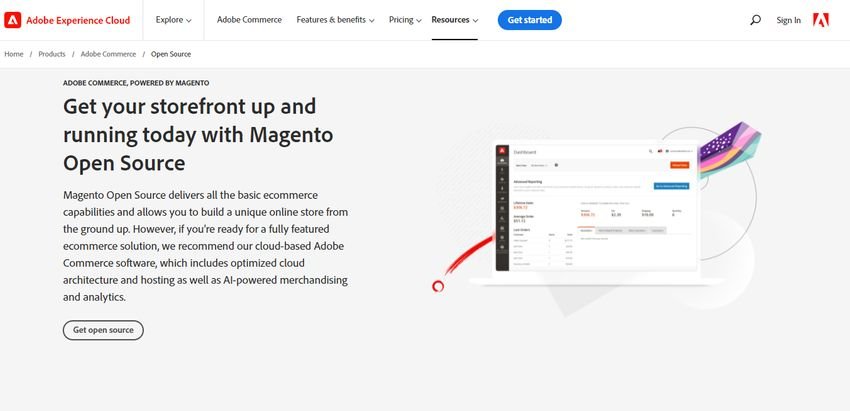
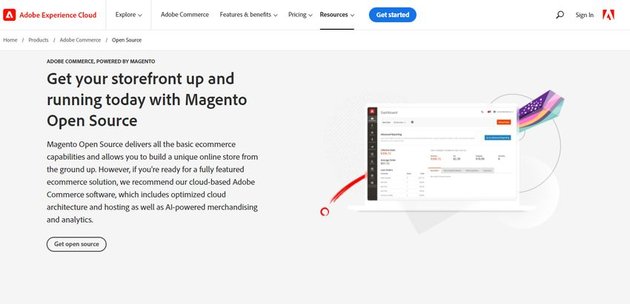
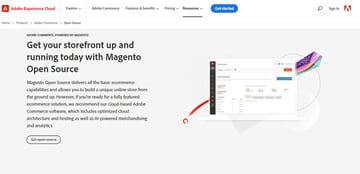
Magento is an open-source content management system that includes all of the essential eCommerce features and allows users to create a one-of-a-kind online store from the ground up. Magento Open Source is a free version that you may download and install on your web hosting account.
There are so many reasons Magento is ideal:
- It is very easy to maintain and upgrade your site.
- Payment is easy and secure.
- It has a reliable and supportive community.
- Magento is very flexible and offers free services for users.
- You can easily integrate the Google Analytics service into your site, which will provide you with multiple reports.
7. Webflow
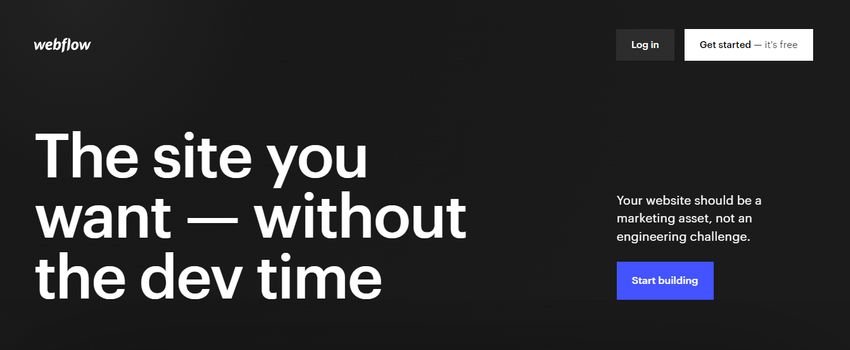


You have complete design freedom when using Webflow. It’s a flexible content management system for building custom blogs, portfolios, and eCommerce stores. Webflow allows you to complete projects more quickly.
- For web design, Webflow offers a drag-and-drop page builder.
- It features a good, clean code quality that allows you to make changes on the page.
8. WooCommerce
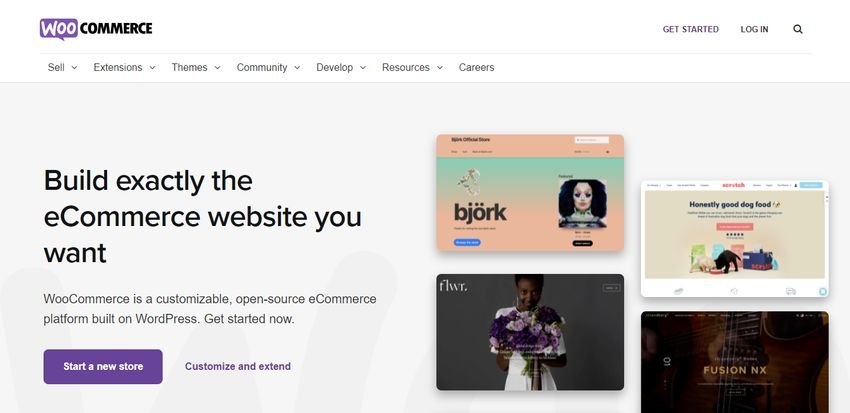


WooCommerce is one of the best eCommerce platforms, and it’s built on WordPress. It is a free tool for you to start up your eCommerce store. WooCommerce is flexible and easy to manage. However, it isn’t quite a content management system (CMS). It is a WordPress plugin that runs on your site, so you’ll have to integrate it into your WordPress site.
WooCommerce is by far the most popular eCommerce plugin for WordPress.
9. Ghost



Modern businesses want an eye-catching website that makes an impression on their target audience. Ghost helps you achieve that. It’s a content management system (CMS) for blogging that comes in both self-hosted and hosted versions.
Ghost is used to power a wide range of websites, from individual bloggers just getting started to massive groups of editors and writers at some of the world’s largest companies.
Ghost CMS is ideal for blogs that only require the publication and management of posts and pages. It can also effectively handle membership sites.
Benefits of Using Ghost
- It has a lot of SEO (search engine optimization) help built-in. This can be delivered without the need for any plugins.
- It features a variety of themes that are both responsive and attractive. They’re simple and designed to keep you focused on your reading.
- It is very easy to create your theme in Ghost CMS, and these themes use handlebars to insert data, which is very easy to learn.
10. BigCommerce

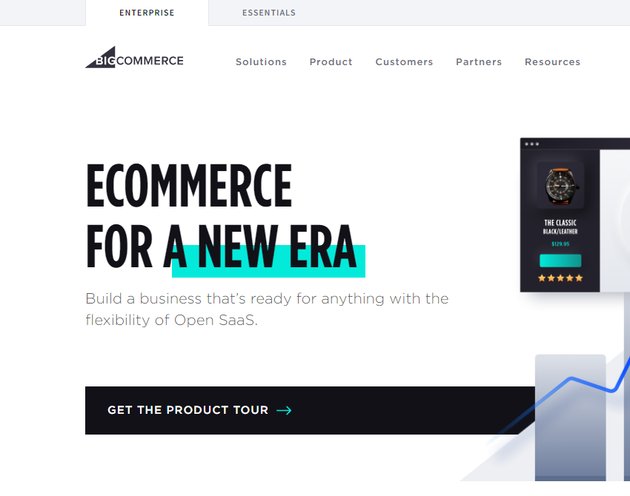

BigCommerce is the most flexible and open SaaS platform, and it is leading a new era of eCommerce platforms. It not only hosts your site, but also provides the CMS platform. It also takes care of your security and backups.
It is one of the most popular eCommerce platforms and offers a high level of scalability for online shops. It has more sales tools built in than any of its competitors, and it combines these features with smart SEO and fantastic multi-channel connectivity.
11. PrestaShop

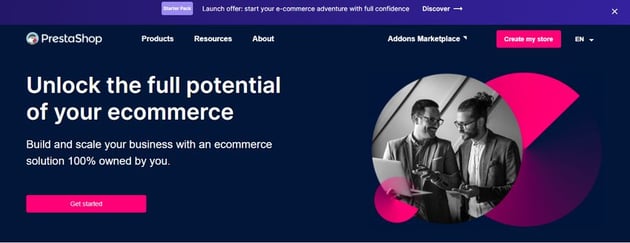

PrestaShop is a powerful and innovative eCommerce platform that includes all of the tools you’ll need to set up an online store and expand your business. And you can also install it on any web hosting platform that supports it.
Why you should use PrestaShop:
- You can easily develop SEO-friendly URLs.
- With PrestaShop CMS, you can fully customize your online store.
- PrestaShop has different modules which provide security to your sites.
- You can manage your products, orders, and statistics.
12. Blogger



Blogger is a CMS platform that’s specifically geared up for blogging. It’s a free service provided by Google. You can use it to create and publish a blog, and you can get a free domain or buy your domain name. The platform is beginner-friendly, and you can earn money from the platform by using Google AdSense.
13. HubSpot CMS
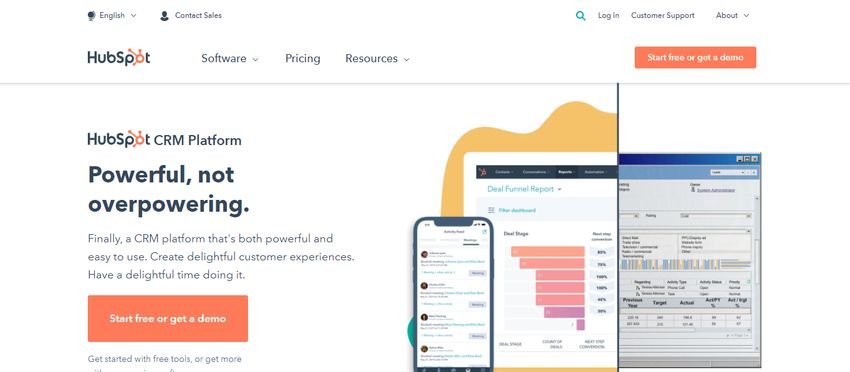
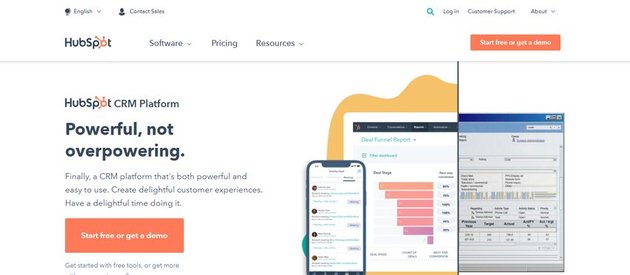
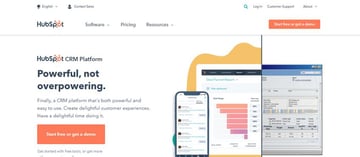
So many marketers and business owners use HubSpot CMS because it provides metrics on your current content marketing strategy and where improvements can be made, such as indicating the need for more internal links, calls to action, or landing pages. With HubSpot CMS, you can track relevant traffic, page performance, and significant impact, among other things.
Why HubSpot?
- It aids businesses in attracting visitors.
- For each visitor, you may quickly develop and personalize your website pages.
- You can keep track of all of your stuff in one spot.
- You can create a site that is unified without having to worry about inappropriate designs, logos, or navigation.
14. TYPO3 CMS



The TYPO3 CMS is an open-source content management system with a big global community, backed by the TYPO3 Association’s approximately 900 members. It combines open-source code, dependability, and genuine scalability in a single package.
This professional CMS offers services and solutions for the whole team across industries, organization sizes, and use cases.
Typo3 is excellent because it is powerful and has a lot of potential to fill in the gaps left by many other products. Because of its flexibility, TYPO3 is ideal for quickly producing online content across a wide range of formats. It can also be used for assistance, marketing, and in-house projects.
15. ExpressionEngine
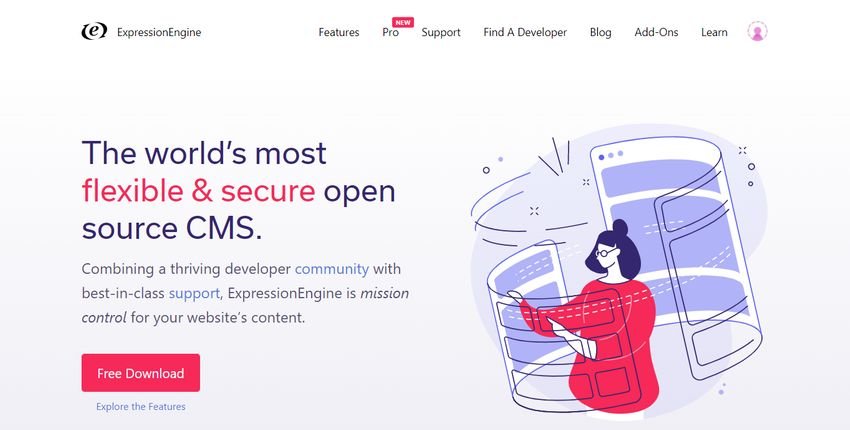


ExpressionEngine (EE) is an elegant, flexible CMS solution for any type of project. Designed to be extensible and easy to modify, EE sets itself apart in how clean and intuitive its user administration area is. It takes only a matter of minutes to understand the layout of the back end and to start creating content or modifying the look. It’s fantastic for creating websites for less-than-savvy clients who need to use the back end without getting confused.
ExpressionEngine is packed with helpful features like the ability to have multiple sites with one installation of software. For designers, EE has a powerful templating engine that has custom global variables, custom SQL queries, and a built-in versioning system. Template caching, query caching, and tag caching keep the site running quickly too.
One of my favorite features of EE is the global search and replace functionality. Anyone who’s ever managed a site or blog knows how useful it is to change lots of data without having to manually search and open each page or post to modify it. You can also get help with ExpressionEngine on Envato Studio.
16. Textpattern

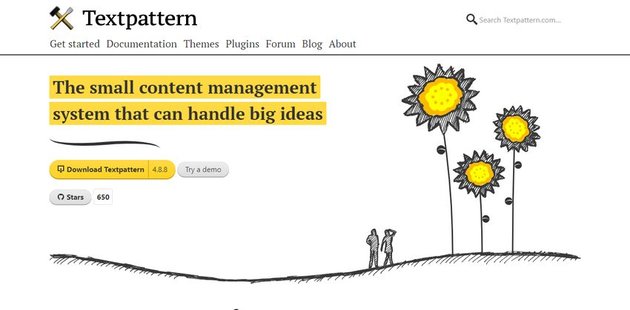

Textpattern is a popular choice for designers because of its simple elegance. Textpattern isn’t a CMS that throws in every feature it can think of. The code base is svelte and minimal. The main goal of Textpattern is to provide an excellent CMS that creates well-structured, standards-compliant pages. Instead of providing a WYSIWYG editor, Textpattern uses textile markup in the text areas to create HTML elements within the pages. The pages that are generated are extremely lightweight and fast-loading.
Even though Textpattern is deliberately simple in design, the back end is surprisingly intuitive and easy to use. New users should be able to find their way around the administration section easily.
While Textpattern may be very minimal at the core level, you can always extend the functionality by using third-party extensions, mods, or plugins. Textpattern has an active developer community, with lots of help and resources at the Textpattern.org site.
17. Radiant CMS



The content management systems that we’ve listed so far are all PHP programs. PHP is the most popular language for web development, but that doesn’t mean we should overlook other popular web languages like Ruby.
Radiant CMS is a fast, minimal CMS that might be compared to Textpattern. Radiant is built on the popular Ruby framework Rails, and the developers behind Radiant have done their best to make the software as simple and elegant as possible, with just the right amount of functionality. Like Textpattern, Radiant doesn’t come with a WYSIWYG editor and relies on Textile markup to create rich HTML. To make it easier to create templates intuitively, Radiant also has its own templating language, Radius, which is very similar to HTML.
18. Cushy CMS



Cushy CMS is a different type of CMS altogether. Sure, it has all the basic functionality of a regular content management system, but it doesn’t rely on a specific language. In fact, the CMS is a hosted solution. There are no downloads or future upgrades to worry about.
Cushy works by taking FTP info and uploading content to the server. The developer or the designer can then modify the layout, as well as the posting fields in the back end, just by changing the classes of the styles. Very, very simple.
Cushy CMS is free for anyone, even for professional use. There is an option to upgrade to a pro account to use your own logo and color scheme, as well as other fine-grain customizations in the way Cushy CMS functions.
19. SilverStripe
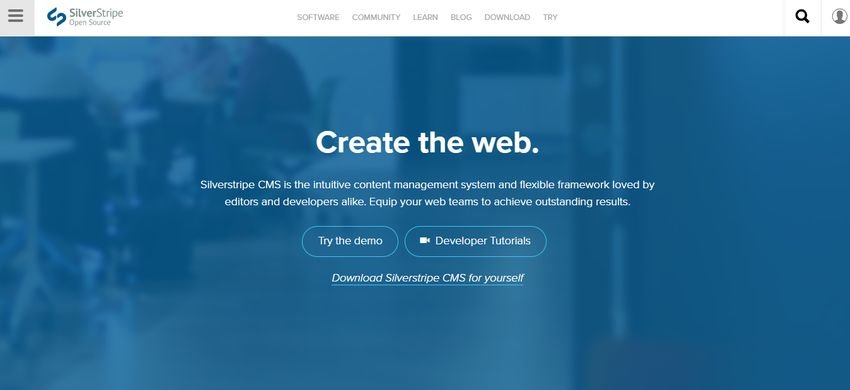
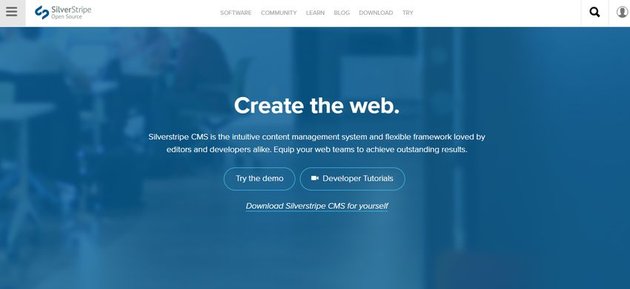

SilverStripe is another PHP CMS that behaves much like WordPress, except that it has many more configurable options and is tailored towards content management, not blogging. SilverStripe is unique because it was built upon its very own PHP framework, Saphire. It also provides its own templating language to help with the design process.
SilverStripe has some interesting features built into the base, like content version control and native SEO support. What’s really unique with SilverStripe is that developers and designers can customize the administration area for their clients, if need be. While the development community isn’t as large as other projects, there are some modules, themes, and widgets to add functionality. Also, you’ll want to modify the theme for each site, as SilverStripe doesn’t provide much in terms of style, to give the designer more freedom.
20. Contao


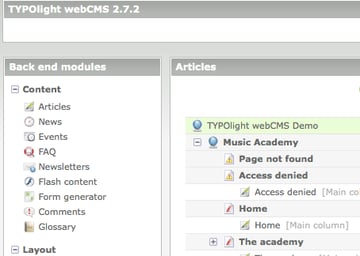
Contao seems to have the perfect balance of features built into the CMS. In terms of functionality, Contao ranks with Drupal and ExpressionEngine, and it even offers some unique bundled modules like newsletters and calendars. Developers can save time with the built-in CSS generator, and there are plenty of resources for learning more about the CMS.
If there is a downside to Contao, it’s that it has so many features and configurable options. Even though the back end is thoughtfully organized, there are still a lot of options to consider. But if you want to build a site with advanced functionality and little extra programming, Contao could be a great fit.